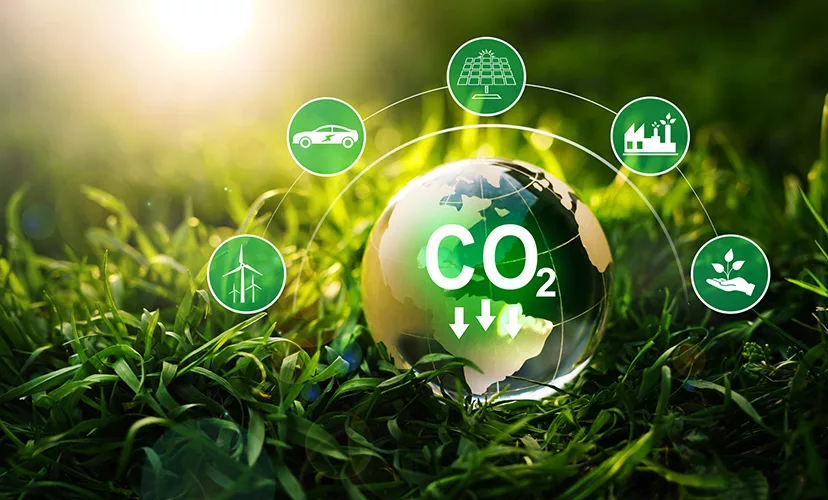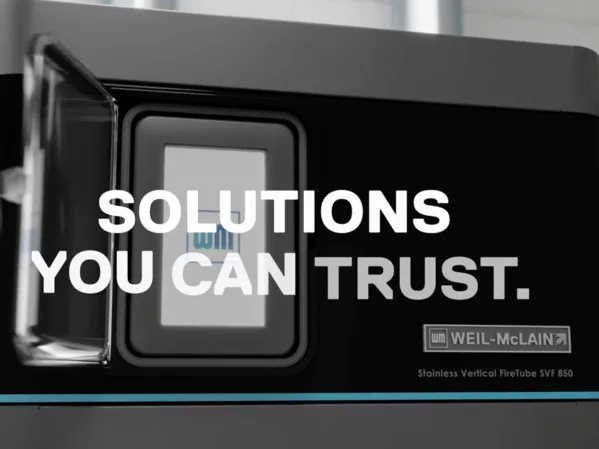Contractors who look closely at the heating industry see a revolution happening in real time. The pace of change will likely escalate over time. Over the past few years, decarbonization has become the industry buzzword, but deserves a much deeper dive. The objective of decarbonization is to reduce carbon emissions that can come from water and space heating, especially when using fossil fuels. It involves more efficient technology and switching to cleaner energy sources.
As with any revolution, however, there are many questions that need to be answered. Change is never easy, and it’s worth examining what started the trend, how it is evolving and what it means for manufacturers and contractors as the transition gains steam.
Root cause
According to the U.S. Department of Energy, water heating accounts for about 18 percent of home energy use. Only HVAC equipment consumes more energy than water heating, and according to the U.S. Energy Information Administration, space and water heating account for about 62 percent of U.S. home energy use.
As of 2020, more than half of the homes (https://tinyurl.com/fv47x3ty) in the United States rely on fossil fuels – natural gas, propane and fuel oil — to heat water. Approximately 47 percent of water heaters (are electric resistance, which are cleaner than those that rely on fossil fuels but can be expensive to operate in states with expensive electricity. In Connecticut, for instance, electricity rates are 91 percent higher than the national average. In 2023, the state’s electricity rates jumped almost 100 percent.
Heat pump water heaters, a signature product in decarbonization, are both clean and highly efficient. While still powered by electricity – thus no emissions – they also work more efficiently than electric resistance water heaters, sometimes as much as 300 percent.
In the past few years, state regulations and government incentives have helped drive demand for heat pumps.
One of the linchpins to the government program is a “roadmap” that was unveiled in 2024. The National Blueprint for Decarbonizing the Buildings Sector (https://tinyurl.com/3yb7akdm) outlines a strategy to reduce greenhouse gas emissions from U.S. buildings by 65 percent by 2035 and 90 percent by 2050. One of the components to its vision statement is to “accelerate on-site emissions reductions by electrifying space and water heating and reducing fugitive equipment refrigerant emissions.”
The federal government’s Inflation Reduction Act offers federal tax credits and rebates for energy efficient upgrades, including heat pumps, to help expedite the transition. Many states, including New York, California, Florida and Illinois, have also adopted rebate programs. Maine has pushed even further, offering incentives to whole-house heat pump systems and discouraging the use of oil and gas.
The final piece of the puzzle in the transition incorporates consumers. In a report last year, a global study found (https://tinyurl.com/4vu9thpe) that roughly 60 percent of consumers say their concerns about climate change have increased in the past two years.
“The best companies,’’ according to the Bain & Company article, “will develop solutions that help consumers live more sustainably, not just buy more sustainably.”
Combine all the various components – incentive, awareness, new regulations – and the ingredients for a revolution are in place.
Contractors’ corner
The transition to decarbonization adds to the plate for contractors, who need to educate homeowners while also learning about the different models of heat pumps and analyzing the installation location.
The first step contractors should learn is the products. Different manufacturers and their models have varying efficiency levels.
It is also important for contractors to understand and pay attention to what works best for a home or business. Heat pump water heaters offer improved efficiency, but may require different installation considerations. Heat pumps need special attention to their installation locations due to their requirements for sufficient air space – typically 700 cubic feet – and proper venting or ducting if in smaller spaces.
Electrical needs also need to be considered. For most models, the electrical panel needs to handle the 30-amp, 240-volt load of a heat pump water heater. There are some 120-volt models available that can plug into standard outlets. Some heat pump water heaters require venting for proper operation, so it’s essential to check local codes and manufacturer’s instructions.
The more difficult challenge for contractors might be convincing the homeowner of the value of a heat pump. Heat pump water heaters generally cost more per unit, and installation costs – especially in retrofits – can drive up the expense.
The improved efficiency of a heat pump can result in dramatic energy savings. A heat pump water heater can save lots of money. According to ENERGY STAR, the annual fuel cost for a heat pump water heater is just $104-$160. A family of four can expect to save approximately $550 a year. With those savings, the water heater will pay for itself in just 2.7 years, according to ENERGY STAR.
Contractors can explain to the homeowner the energy savings, potential rebates and the long-term cost benefits of switching to a decarbonized system. Real numbers on operating costs can help demonstrate to home and business owners the value of an upgrade.
For contractors, it’s worth staying up to date on available incentives and evolving technologies in water heating. Knowing what’s out there can help contractors give home and business owners the best options for their needs and budgets.
Heat on manufacturers
The decarbonization drive has also impacted manufacturers who need to innovate new technologies, provide a variety of products and educate customers and contractors.
Technology is rapidly improving. Manufacturers are improving the design, striving to make more modular and compact units that can help simplify installation while also sourcing new materials, such as refrigerants, that meet performance and safety standards. The continuous progression has made the development of new products easier over time.
Manufacturers also need to develop products for different building types and colder climates. Heat pumps work best in moderate climates, and more equipment options could help create more opportunities for buildings to electrify. Hybrid options, which combine heat-pump technology with a backup fossil fuel heater, are a unique solution. Units from HTP and American Standard Water Heaters, for example, can switch to standard electric mode during high load conditions when the unit may need to expand more energy than usual.
Like contractors, manufacturers also need to provide documentation and education on the benefits of heat pumps and decarbonization. Many customers remain wary of the advantages, especially if they might have been disappointed previously by poor system performance.
Explosive growth
According to Rewiring America, (https://tinyurl.com/3c8sta58) just 1% of homes in the United States use electric heat pump waters and 16% use heat pumps for space heating.
“Nationally, heat pump water heater sales need to be accelerated more than 10 times over business-as-usual by 2032,’’ the report says.
There is already movement in that direction. According to Environment America, heat pump sales outpaced gas furnaces by nearly 37% in 2024. Sales of heat pump water heaters have grown by 25% annually over the past five years, and are projected to capture 40% of the water heating market by the end of the decade.
Revolutions, history tells us, do not develop overnight. They take time to evolve, take hold and finally, become the norm and not the exception.
Smart manufacturers, contractors, business owners and homeowners are embracing the decarbonization trend. It already has significant traction and will advance rapidly over the next decade.
Kyra Macaroco is product manager for water heating in the U.S. and Canada at Ariston Group. She holds a bachelor’s degree in mechanical engineering from the University of Massachusetts Dartmouth.




